Written by Bryan Dearsley
The Hague (Den Haag) - the third largest city in the Netherlands - is the seat of the country's government, and home to the Royal Family. It's also a city full of history, many splendid museums and art galleries, and countless entertainment opportunities. Close to the North Sea (it's where you'll find the seaside resort of Scheveningen), The Hague is also home to numerous government ministries and embassies, along with the headquarters of several international organizations, including the International Court of Justice. The Hague is also a city of the arts, and was home to many prominent Dutch artists, no doubt attracted by the city's pleasant wide streets, elegant and spacious squares and promenades, and attractive residential suburbs.
The Hague (Den Haag) - the third largest city in the Netherlands - is the seat of the country's government, and home to the Royal Family. It's also a city full of history, many splendid museums and art galleries, and countless entertainment opportunities. Close to the North Sea (it's where you'll find the seaside resort of Scheveningen), The Hague is also home to numerous government ministries and embassies, along with the headquarters of several international organizations, including the International Court of Justice. The Hague is also a city of the arts, and was home to many prominent Dutch artists, no doubt attracted by the city's pleasant wide streets, elegant and spacious squares and promenades, and attractive residential suburbs.
1 The Binnenhof
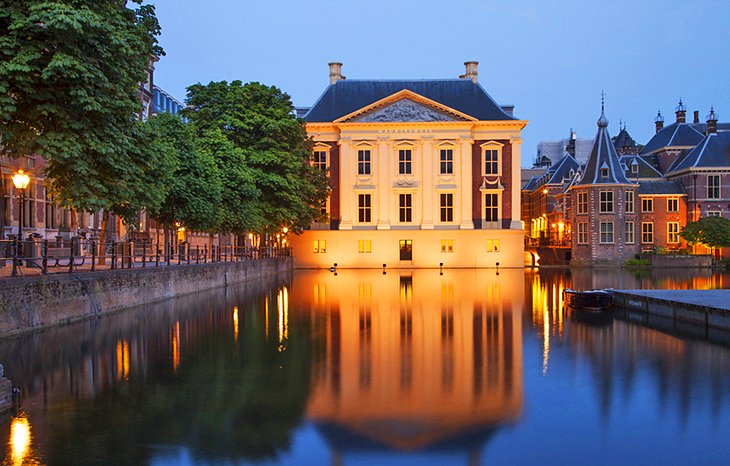
The Binnenhof
In the center of the oldest section of The Hague is the Binnenhof -
the Inner Court - an irregular group of buildings constructed around a
large central courtyard. With its origins dating back to 1250 and tied
to the building of a castle, it soon became the residence of the ruling
aristocracy and today houses both chambers of Parliament. The most
important buildings of the complex are the exquisite Ridderzaal, or Knights' Hall (see below for more details), still used for functions and receptions, and in the North Wing,
the chamber is the official residence of the Prime Minister. Also
important are the Rolzaal court house dating from 1511 and the
Lairessezaal with its 17th-century paintings by Gerard de Lairesse.
Other highlights include the First Chamber, notable for its
painted medallions depicting statesmen and the portrait of King William
II under the country's coat of arms. The Second Chamber - the legislative authority that watches over the government - sat in the former ballroom from 1815 until 1992.
Address: Hofweg 1-H, 2511 AA Den Haag
2 Editor's Pick Ridderzaal: The Knights' Hall
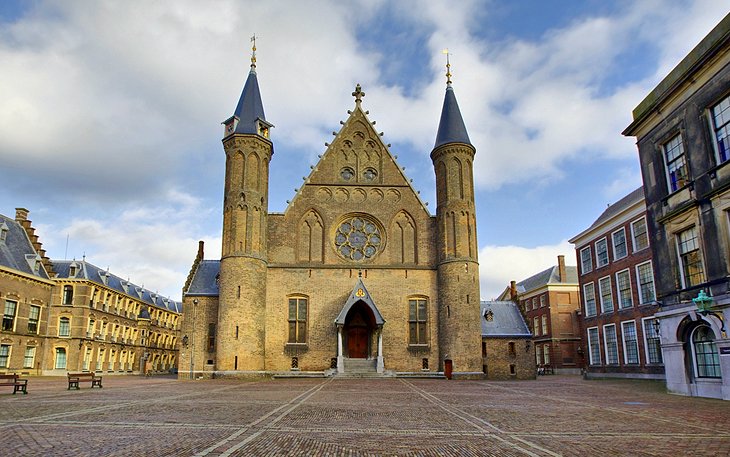
Ridderzaal: The Knights' Hall
At the east end of the Binnenhof's central courtyard, the 13th-century Knights' Hall (Ridderzaal)
is a spectacular historic building still used for state receptions and
the opening of parliament each September. This large Gothic hall - it
measures 40 meters by 20 meters - boasts many magnificent stained glass
windows depicting the coats of arms of Dutch towns, as well as the
spectacular Rose Window with the arms of the principal noble families of
the Netherlands. The heavy timber roof structure with its 18-meter-long
beams has the appearance of an upturned ship, and carved wooden heads
symbolizing eavesdroppers from the "higher powers" are supposed to deter
members of the assembly from lying. Originally built as a banqueting
hall, it later served as a market, a promenade, a drill hall, a
playground, and even a hospital before being restored in 1904.
Address: Hofweg 1-H, 2511 AA Den Haag
3 The Grote of Sint-Jacobskerk
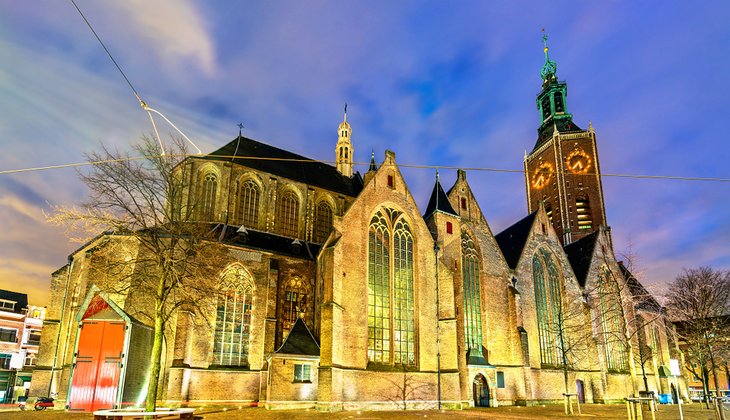
The Grote of Sint-Jacobskerk
Ciao Anita!
The oldest part of the Gothic Grote of Sint-Jacobskerk (Great St.
James Church) dates from the 14th century, while newer sections,
including the 100-meter-high tower, were added around 1420. Unique in
the Netherlands for its hexagonal form, the tower originally served as a
lookout (the bell was too big for the tower and can be seen inside the
church). A new carillon, one of the largest in the Netherlands with 51
bells, was installed in 1959, and can be visited as part of a tower tour
(the views over the city are incredible). Highlights of the beautifully
vaulted interior include numerous monuments and grave-slabs, including
those of the poet and statesman Constantijn Huygens who died in 1687,
and physicist and astronomer Christiaan Huygens, buried here in 1695.
Other notable features are the carved wooden pulpit from 1550, the coats
of arms of the Knights of the Golden Fleece, a large 19th-century
organ, and the stained glass in the choir and north transept.
Address: Rond de Grote Kerk 12, 2513 AM Den Haag
4 The Peace Palace

The Peace Palace
The famous Peace Palace (Vredespaleis), an imposing brick building
constructed between 1907-13, was largely paid for by philanthropist
Andrew Carnegie. Built in a mix of Gothic and Neoclassical styles, it's
flanked on its long arcaded façade with its steeply pitched roof and
80-meter-high tower. Home to the International Court of Justice, the
Permanent Court of Arbitration, the Academy of International Law and a
library of international law, it boasts a rich interior décor
contributed by numerous countries, including marble from Italy, wood paneling from Brazil and the USA, and ornamental iron railings from Germany.
Weekend guided tours are conducted through the palace and around the
superb gardens (bookings can be made through the visitor center).
Address: Carnegieplein 2, 2517 KJ Den Haag
Official site: www.vredespaleis.nl/index.php?tl=1
5 Panorama Mesdag
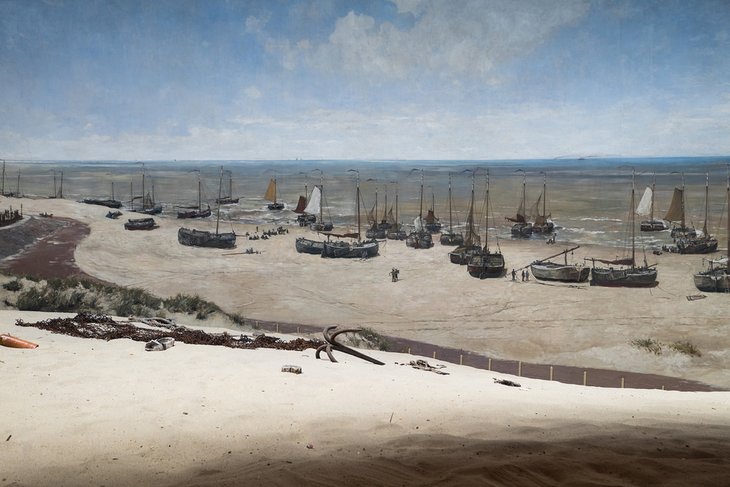
Panorama Mesdag
bertknot
Housed in a specially made rotunda, Panorama Mesdag is a gigantic
painting measuring 120 meters in length and 14 meters in height that was
painted by HW Mesdag and his wife, Sientje Mesdag-Van Houten, along
with other artists of the Hague School. This stunning scene depicts
coastal Scheveningen as it was around 1880, with charming views of the
sea, the beach, and dunes. Designed to create the illusion of 3D, this
spectacular circular painting - the largest in the world - is indirectly
lit from above, and thanks to its large sand dune with a number of real
objects, creates the illusion that you're standing in the middle of
this beautiful landscape. The building also contains a collection of
paintings by Mesdag and his wife (further examples of Mesdag's work,
along with other Hague School artists, is on display at the Mesdag Museum).
Address: Zeestraat 65, 2518 AA Den Haag
Official site: www.panorama-mesdag.com/home?id=920
6 The Mauritshuis
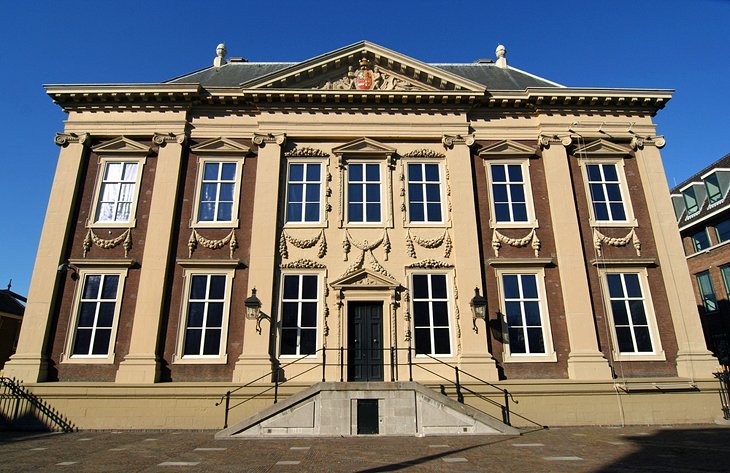
The Mauritshuis
The handsome Mauritshuis, a monumental yet elegant residence built in
classical style in 1641, serves as one of The Hague's most important
museums. Highlights include a small room, or "cabinet," containing
valuable objects and curios, along with numerous paintings, including
Rembrandt's Anatomy Lesson, Vermeer's View of Delft, Jacob van Ruisdael's View of Haarlem and Rogier van der Weyden's Lamentation,
a masterpiece of medieval painting. English language guided tours are
available, and a superb app showing the museum's many masterpieces can
be downloaded for free in advance of your visit.
Address: Plein 29, 2511 CS Den Haag
Official site: www.mauritshuis.nl/en/
7 Gemeentemuseum Den Haag

Gemeentemuseum Den Haag
In the modern residential district of Duinoord, a garden suburb with
houses built in a style influenced by traditional Dutch almshouses
(hofjes), the architecturally pleasing Municipal Museum - Gemeentemuseum
Den Haag - is a must-see. Designed by HP Berlage in 1935, the museum
displays a wide range of material relating to the history of the town,
along with 19th- and 20th-century art, applied and decorative art
(including ceramics, silver, and furniture), and an outstanding
collection of traditional and electronic musical instruments. Of
particular note is a section dedicated to modern art with numerous works
by Piet Mondriaan and Paul Klee.
Address: Stadhouderslaan 41, 2517 HV Den Haag
Official site: www.gemeentemuseum.nl/en
8 Scheveningen Resort and Kurhaus
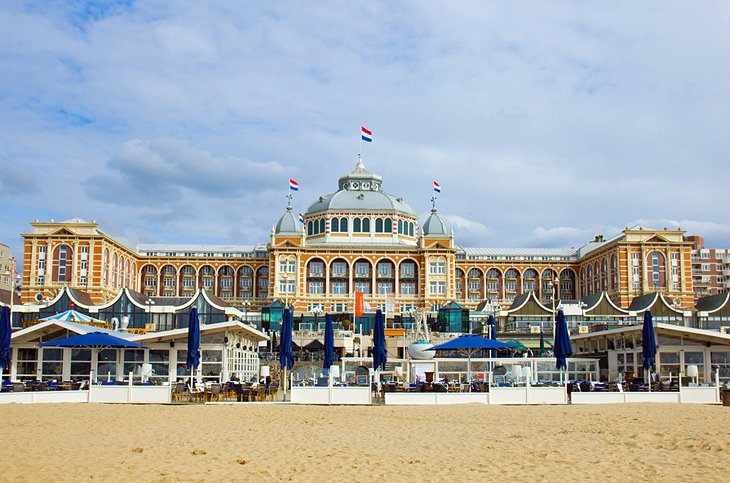
Kurhaus
With its broad sandy beach and seafront promenade, Scheveningen is
ideal for holidaymakers seeking sun, sea, and sand. Here you can
sunbathe, walk among the dunes, ride a horse or a bike along the beach,
play a little golf, or take a fishing trip, all within a few minutes of
The Hague's city center. A prime tourist attraction here is the imposing
Kurhaus, an Art Nouveau style structure (now protected as a national
monument) built in 1885 that houses a first-rate hotel, an art gallery,
superb promenades, and the sumptuous Kurzaal, the huge glass domed centerpiece of the resort that now serves as a restaurant. Also worth a visit is the Scheveningen Pier with its four island-like extensions and aquarium, a 45-meter-high lookout tower, and a theater. Be sure to visit the Madurodam, an excellent miniature park opened in 1952 that boasts 1:25 scale replicas of the Netherlands' most famous buildings.
Address: Gevers Deynootplein 30, 2586 CK Den Haag-Scheveningen
9 Haagse Bos and Huis ten Bosch
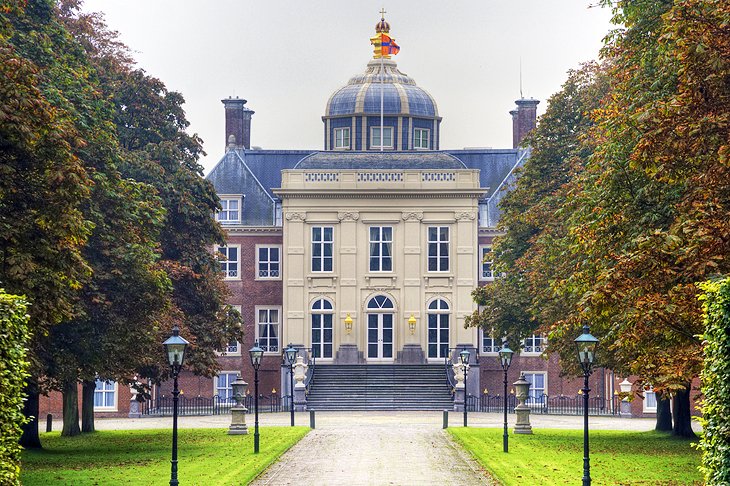
Huis ten Bosch
One of The Hague's prettiest open spaces, Haagse Bos is a
two-kilometer-long expanse of parkland noted for its beautiful winding
avenues. Extending all the way from the old city center to the boundary
of the suburb of Wassenaar, it's a pleasant way to spend time as
you explore one of the country's oldest forests, protected from
deforestation since the Middle Ages. The park's most notable feature is
Huis ten Bosch, a moat-surrounded palace built in 1646 as a royal
country residence. Famous as the location of the world's first
international peace conference in 1899, the palace is now home to King
Willem-Alexander. While not open to the public, there are fine views of
the building from various points around the park. Another palace worth
walking around for its fine exterior views is Noordeinde Palace. The
best views are from the Noordeinde Palace Gardens (admission is free), which also provides a great view of the Royal Stables, home to the horses used to pull the Royal Coaches.
Address: Haagse Bos, Den Haag
10 The Prison Gate Museum
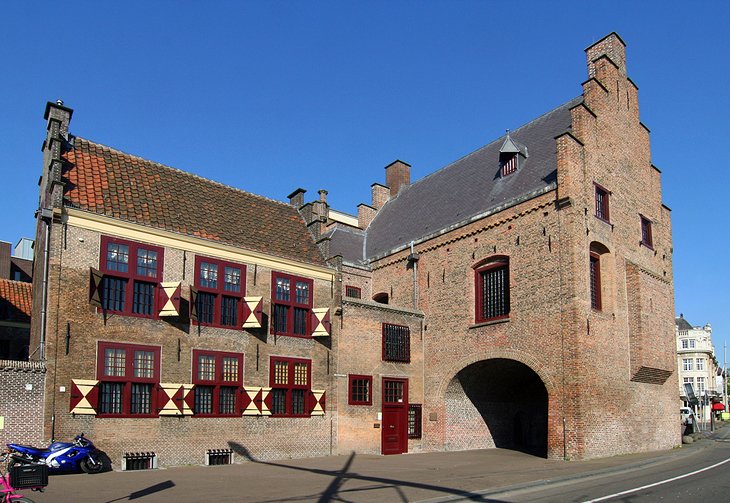
The Prison Gate Museum
On the north side of the Binnenhof stands the Prison Gate
(Gevangenpoort), a well-preserved structure built in 1296 as a
gatehouse. Converted to a prison in the 15th century, it was here that
brothers Cornelis and Johan de Witt, accused of an attempt on the life
of Prince William III, were murdered in 1672 (a monument to them stands
in the nearby courtyard). The old prison and torture chambers have been
open to the public since the 1880s and include a large collection of
paintings, prints, and relics - as well as torture devices -
illustrating the administration of justice in the 17th century. English
language tours are available Sundays at 2:15pm.
Address: Buitenhof 33, 2513 AH Den Haag
Official site: www.gevangenpoort.nl/page/english/
11 Museon
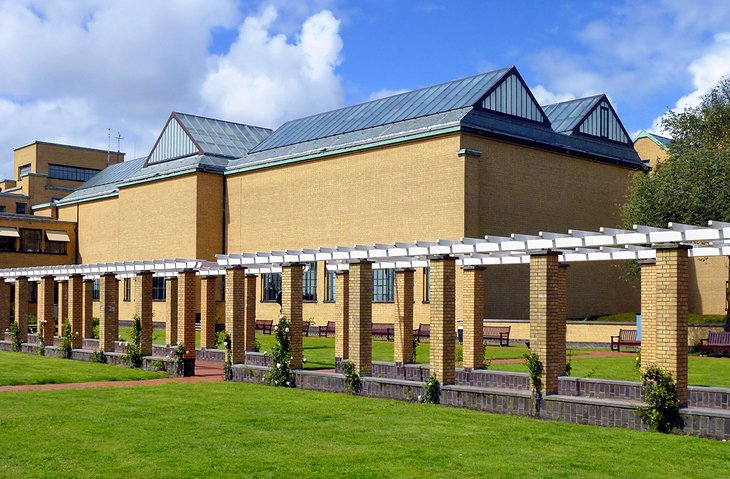
Museon
In a wing of Gemeentemuseum Den Haagm, the city's Municipal Museum,
Museon illustrates the origins of the earth, the development of human
life and culture, and the achievements of science and technology using
accurate reproductions, models, and displays of technological apparatus
(kids will enjoy the hands-on workshops and educational programs). Two
other museums worthy of a visit are the Escher Museum with its large collection of works by graphic artist MC Escher, and the Louwman Museum, a slice of heaven for car-lovers with its superb collection of vintage vehicles and motorbikes.
Address: Stadhouderslaan 37, 2517 HV The Hague
Official site: www.museon.nl/en
12 The Netherlands Dance Theater
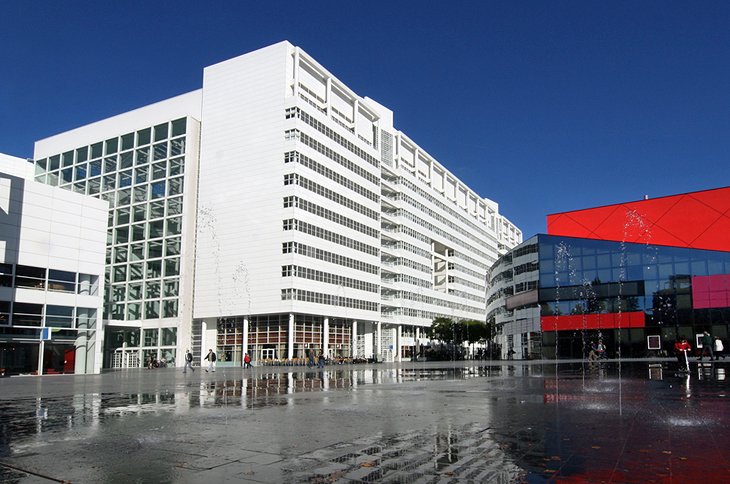
City Hall
Facing the Nieuwe Kerk and next to the City Hall is a
modern yet rather plain looking building that hides a couple of The
Hague's best-kept secrets: the Netherlands Dance Theater (Nederlands
Dans Theater) and the Residence Orchestra (Residentie Orkest).
Built in the 1980s, its attractive interior consists of large curving
ramps and galleries suspended on three levels against the dark red and
golden coloring of the hall itself. The dance company's reputation makes
seeing a performance a must (check their website for performance
details). The Residentie Orkest, too, is well worth seeing. Founded in
1904, it has played host to composers such as Igor Stravinsky, Richard
Strauss, and Maurice Ravel.
Address: Schedeldoekshaven 60, 2511 EN Den Haag
Official site: www.ndt.nl/en
Day Trips from The Hague
Duivenvoorde Castle
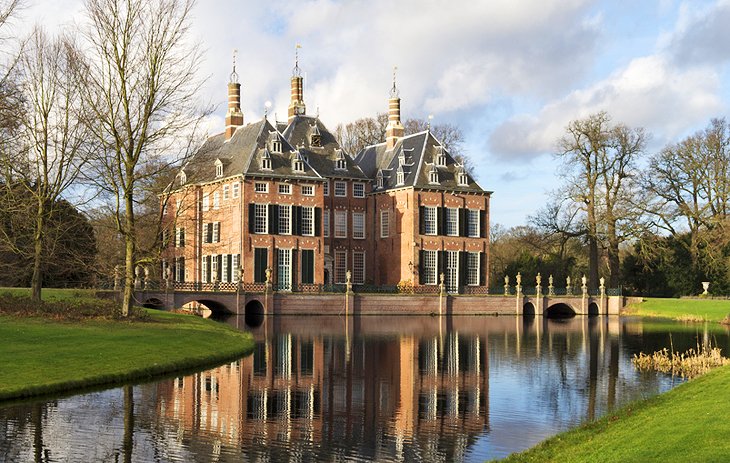
Duivenvoorde Castle
Just 15 kilometers northeast of The Hague is the small town of
Voorschoten and delightful Duivenvoorde Castle (Kasteel Duivenvoorde), a
medieval fortress restored in 1631. The original decoration and
furnishings have been preserved, including family portraits, Delftware, a
large collection of Chinese and European porcelain, and numerous items
of silver. Also of note is the English-style park.
Address: Laan van Duivenvoorde 4, Voorschoten
Old Town Gouda and the Grote Kerk of Sint Janskerk
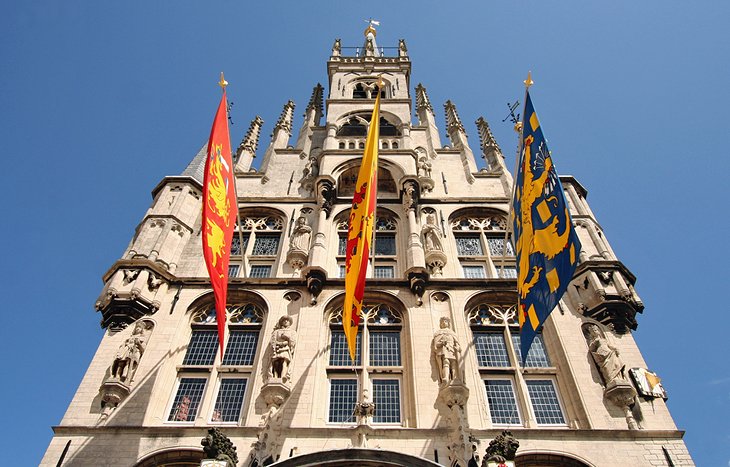
Old Town Gouda and the Grote Kerk of Sint Janskerk
There's a lot more to the Dutch town of Gouda than its cheese. This
historic town, 33 kilometers east of The Hague, has one of the most
attractive town halls in the country, famous for looking more like a
place of worship than of government. In the spacious triangular Markt,
this imposing Late Gothic building (by Jan Keldermans, 1449-59) was
originally surrounded by a moat. The handsome external staircase in
Renaissance style was added in 1603. On the east wall is a carillon,
which rings every half hour with moving figures representing the
granting of the town's charter by Count Floris V in 1272. In the
Trouwzaal (Marriage Hall), look for the 17th-century tapestry by David
Rufelaer made in Gouda.
Gouda's most important church is the Grote Kerk of Sint Janskerk, dating from the 15th century and one of the largest in the Netherlands. In addition to its size, its other best-known feature is its vividly colored stained glass windows, the Goudse Glazen, which include both Biblical and historical themes. The finest of the glass was the work of Wouter and Dirck Crabeth between 1555 and 1577, while the most recent window, War and Liberation, was designed by Charles Eyck in 1947.
Gouda's most important church is the Grote Kerk of Sint Janskerk, dating from the 15th century and one of the largest in the Netherlands. In addition to its size, its other best-known feature is its vividly colored stained glass windows, the Goudse Glazen, which include both Biblical and historical themes. The finest of the glass was the work of Wouter and Dirck Crabeth between 1555 and 1577, while the most recent window, War and Liberation, was designed by Charles Eyck in 1947.
Hotels
by TripAdvisor
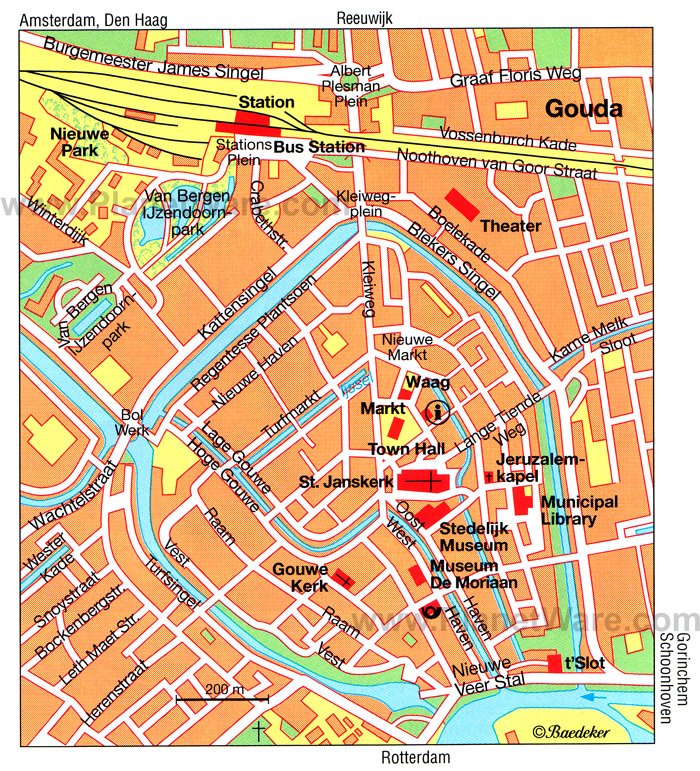
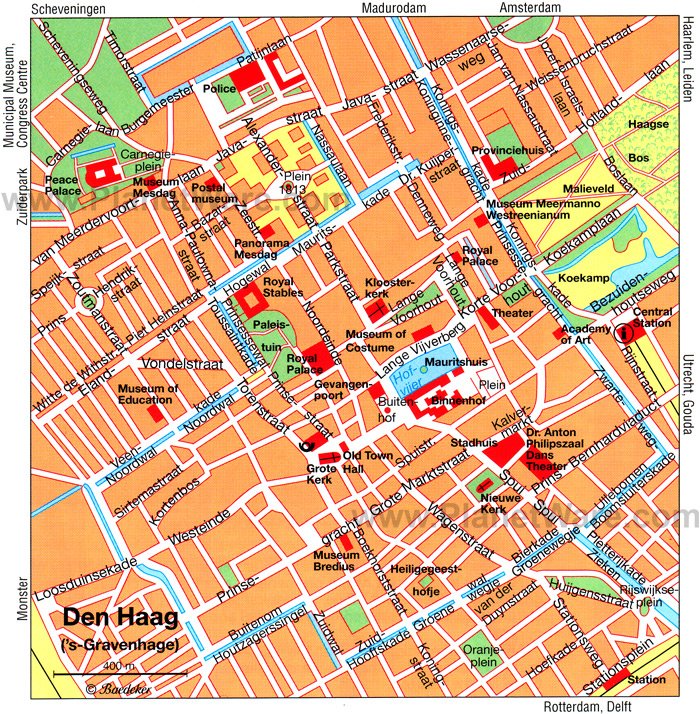
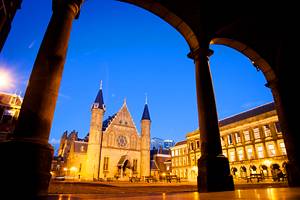
No comments:
Post a Comment